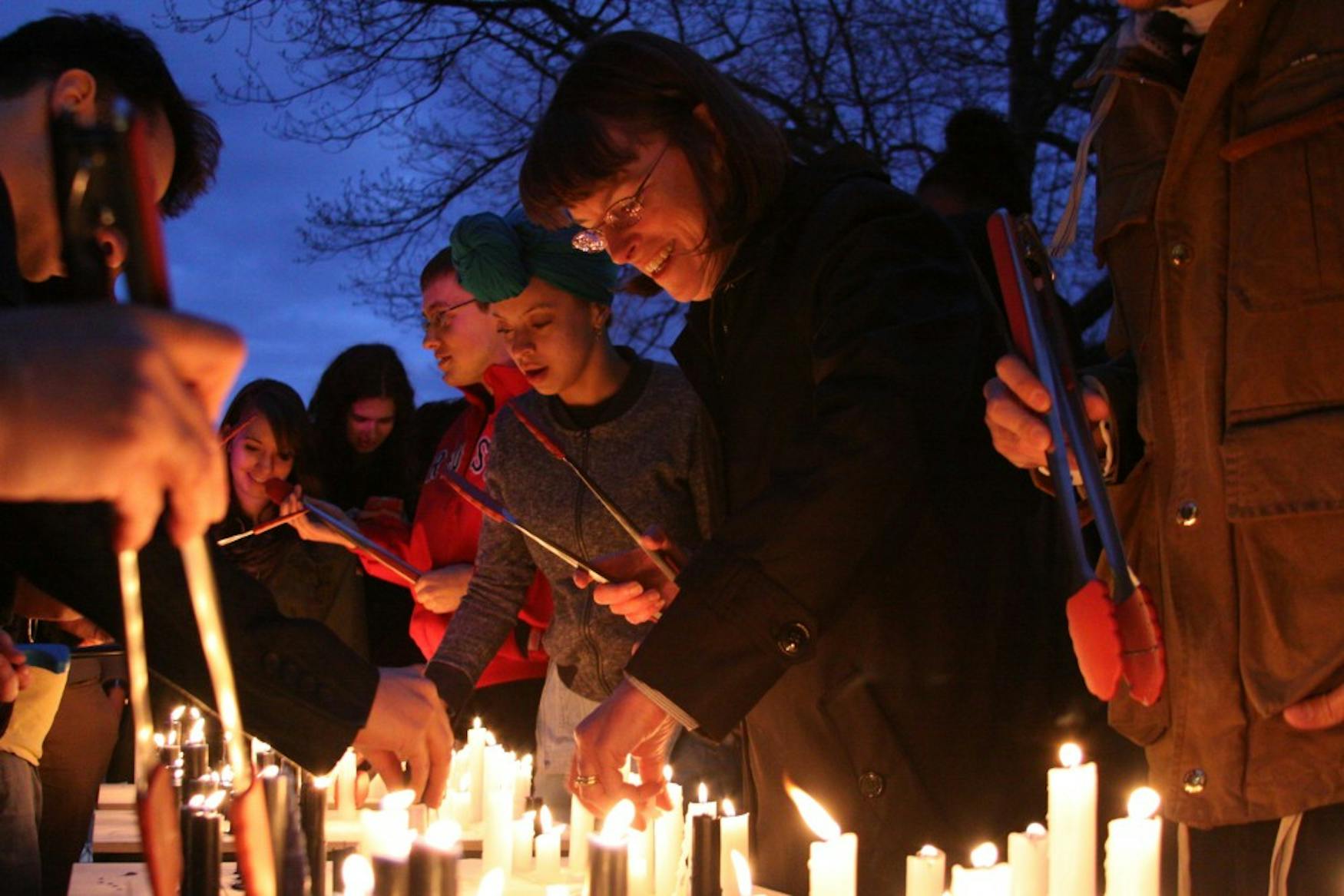Candles as chess pieces light up the Rose
Five-hundred and twelve candles lit up the front of the Rose Art Museum on Friday evening for “The Burning Boards,” a piece of performance artwork created by Los Angeles-based artist Glen Kaino.
The event featured 16 simultaneous games of chess, played with lit candles. The piece was first performed at the Whitney Museum in New York in 2007. It was later staged at the World Chess Hall of Fame in Saint Louis, Mo., as part of the exhibit Cage & Kaino: Pieces and Performances.
As the highlighted event of the Festival, “The Burning Boards” exemplified this year’s theme of “Find Your Light,” not only in its use of candles but also in its location next to Chris Burdens’ “Light of Reason.” The event started with speeches by Kaino, Acting Director of the Office of the Arts Ingrid Schorr and Provost Lisa Lynch, who also took part in a match.
“This is amazing because it completely takes the game of chess and turns it on its head—upside down, inside out,” said Lynch. “You have to rethink your whole approach of chess because your moves involve not only thinking your strategy ahead but ‘is the wind gonna blow out my candle, is the candle gonna fall over?’”
In his speech, Kaino discussed his inspiration for the piece, and in true Brandeis fashion discussed how it relates to social justice. “[Chess players] imagine thousands of moves and possibilities,” he said. “And as a dreamer thinking about social justice, you think about the amount of opportunity and options that go into every move. So as the wax drips, for me, [it is] an opportunity to raise questions and think about how we might record at least the alternatives to some … worlds.”
In all of Kaino’s demonstrations of “The Burning Boards,” he has never had one outdoors. Friday night happened to be particularly windy, which posed a challenge on top of the usual ones Kaino’s performance piece presents. In light of this outdoor performance, Kaino decided that there would be “unlimited relights.”
When the candles were lit, the games began. The boards were tightly packed together in four rows of four games. Players used rubber kitchen tongs to move the pieces in order to avoid touching the flames.
In a match of experts, Kaino squared off against Larry List, the curator of Cage & Kaino: Pieces and Performances. Lynch faced off against President of the Chess Club Misha Vikenchuk ’16. Lynch believes that Vikenchuk took mercy on her at first, but he eventually went in for the win. “I have to say that Misha took pity on me because I begged for mercy early on. And he waited 22 moves before he took me out, but I think he could have done it much earlier,” Lynch said in an interview with the Justice.
There were bleachers around the entrance to the Rose, but once the games began, onlookers moved in closer to form a ring around the boards. This turned out to be useful as the huddled crowd blocked most of the wind. But there were still bursts of wind that managed to extinguish most of the candles—causing momentary pauses in the games.
In his introduction, Kaino had said that the piece presents an opportunity for collaboration among the players. “What happens when you play is that the pieces melt at different speeds. So one also has to collaborate with their partner to remember where the pieces came from,” he said. It is true that players were constantly asking each other—asking questions like “is that a knight or a pawn?” Even Kaino and List, players who were obviously very familiar with “The Burning Boards,” had to ask one another for clarification.
Near the end of the event, onlookers and players alike joined in to sing “Happy Birthday” to one of the participants.
After nearly an hour, all the games were finished and the candles had melted downIn an interview with the Justice, Kaino said that he really enjoyed having the games played outside—“Having the work being presented with an unlimited ceiling, I think, is fantastic,” he said, looking up at the sky.



Please note All comments are eligible for publication in The Justice.